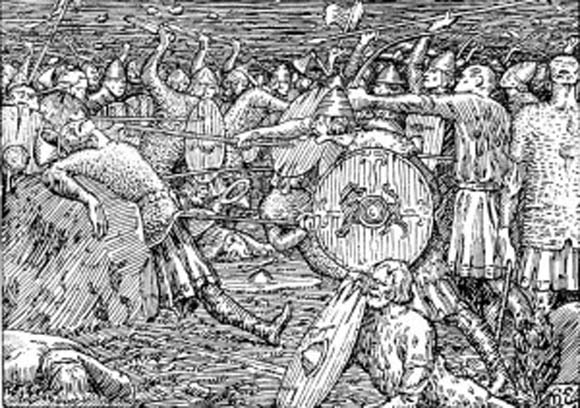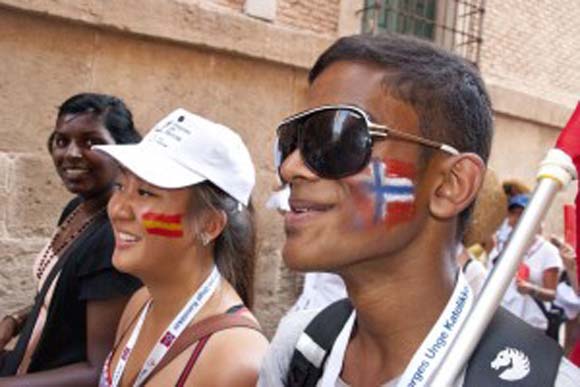
The Catholic Church in Norway
There are traces of missionary activity towards the Scandinavian countries from before the 9th century, maybe even earlier. For Norway’s part, the conversion from paganism rooted in the Norse mythology to the Christian faith accelerated in a period when Norway also began to consolidate to become one Kingdom. But it wasn’t until the patron of Norway, Saint Olav, began his conversion of the people that the Christian faith began to get a foothold in the country. Olav Haraldson, which was his full name, had converted to Christianity in his youth, and he got baptised at Rouen in Normandy in France after having stayed there one winter. In 1015, he returned to Norway, claiming the throne of Norway. He had a diplomatic nature, and offered the petty kings and the aristocracy to be liberated from their pagan beliefs (as well as accepting him as king) or get liberated of their heads. Perhaps unsurprisingly, many chose the first alternative.
But turning Norway into one kingdom could not be achieved without battles, and during the battle of Stiklestad in 1030 he was killed. But his death also became the decisive factor for achieving what he had struggled for during his life. After his death, people soon considered him to be a saint, miracles happened at his grave, and he was posthumously given the title Rex Perpetuus Norvegiae -Norway’s Eternal King. This was the beginning of the new era for the Catholic Church, and churches, monasteries and priories soon was established from Moster in south to Loppøya in north.
For ethnic Norwegians, cradle Catholics and converts, as well as for second or third generation immigrated Catholics, these historical roots are important and create a profound bond of identity and a feeling of being on old grounds. And in addition to this, there are large groups of working immigrants and groups of refugees coming from all over the world. A normal Norwegian Catholic parish may count about fifty different nationalities, some have over a hundred. This multinationality sometimes reminds us of Pentecost, and is a daily reminder of what the word ‘Catholic’ really means – universal!
Even though we consist of many nations, we are still few in numbers. In the Nordic countries there are 24 million inhabitants. Of these we count officially about 250, 000 Catholics. But even though we are small in numbers, we stand in a tradition that goes beyond both time and place. The local Catholic Church always stands in a larger context, both geographically, culturally and historically. Theologically we confess a universal faith based on a coherent doctrine followed by a sacramental practice that carries within it a spiritual strength that often opens doors for searching souls living in a secularised society. Therefore, there is no reason for pessimism; we only need courage to meet the many needs of men and women of our society, and strength to proclaim the Gospel in a context where there is no longer any immediate access to the faith. The situation can sometimes remind us of the dialogue between the apostle Philip and the Ethiopian treasurer, as Philip asked the man if he understood the Scriptures: ‘How can I, unless someone guides me?’ (Act 8,26). Let us then pray to Saint Olav for his intercessions for the spreading of the Good News also in this part of the world.




